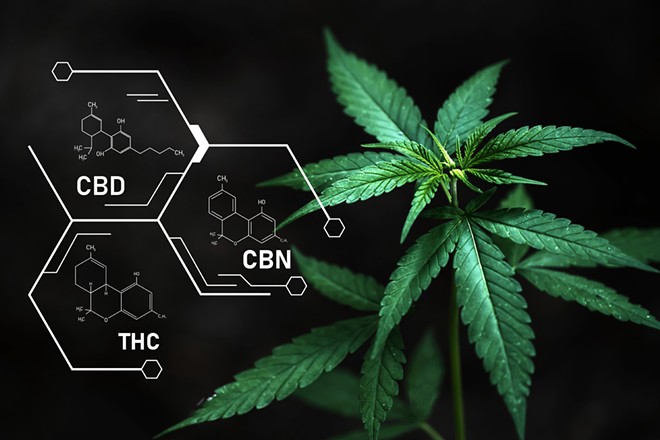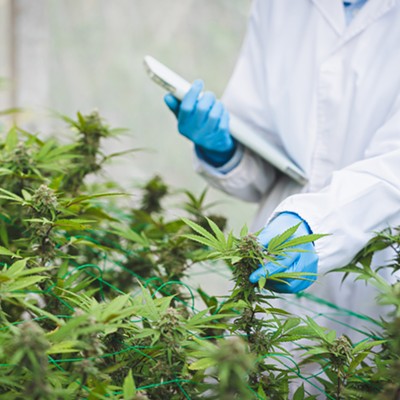Unlike coffee, which perks drinkers up with caffeine, or booze, which imparts drunkenness through alcohol, the effects of cannabis come not from just one chemical, but more than 100. These chemicals, of which 113 have been identified in the plant, are known as cannabinoids. While they all play some role, however small, in the plant's effects on users, there are three above all that users should be familiar with.
THC
Tetrahydrocannabinol, also known as Delta-9-THC or THC for short, is the chemical in cannabis most responsible for the plant's intoxicating effects. As a result, consumers looking to determine the approximate strength of cannabis products can look to THC content as a guide, similar to how consumers can use the alcohol-by-volume content of beer or wine. In Washington, all cannabis products are required to list the percentage of THC by weight present on the product's label.
By and large, THC does not occur in the cannabis plant, but rather exists as the nonintoxicating tetrahydrocannabinolic acid. When heated, whether by a lighter, vaporizor or through the cooking process, tetrahydrocannabinolic acid breaks down into active THC.
CBD
Cannabidiol, also known as CBD, is a cannabinoid known to have many nonintoxicating effects. While CBD is not intoxicating on its own, its presence impacts the body's response to THC, making it something of a secondary factor in determining a cannabis product's effects. Higher concentrations of CBD relative to THC can, for example, diminish the "high" a user will experience.CBD has been studied for its numerous medicinal and therapeutic benefits, ranging from over-the-counter pain and anxiety relief to FDA-approved prescription seizure medications. CBD products have become widespread nationally since 2018, when the federal government legalized hemp.
CBN
Cannabinol, also known as CBN, was the first cannabinoid known to science. Researchers isolated CBN from cannabis in the late 1800s and by 1940 were capable of synthesizing it in a lab. CBN occurs in small amounts in fresh cannabis, with its concentration increasing in harvested plant matter over time. As a result, consumers can increase the amount of CBN in their cannabis by allowing it to age in the open air.CBN has less of an affinity to the body's cannabinoid receptors compared with THC, making it a less potent intoxicant. Unlike CBD, however, CBN can produce noticeable intoxication. It is often used in combination with THC and CBD in topical products. ♦

















